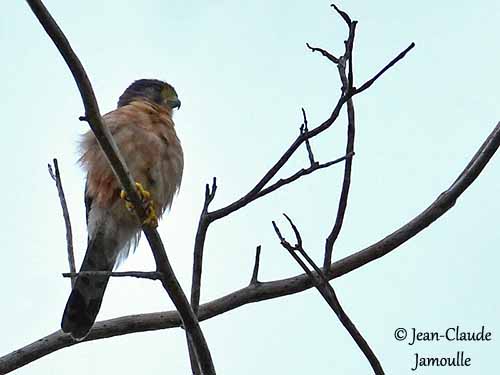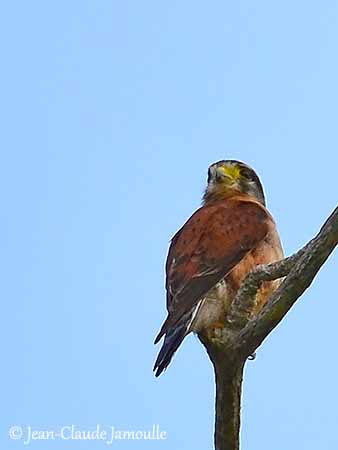
Fr: Crécerelle des Seychelles
All: Seychellenfalke
Esp: Cernícalo de las Seychelles
Ita: Gheppio delle Seychelles
Nd: Seychellentorenvalk
Sd: Seychelltornfalk
Photographer:
Jean-Claude Jamoulle
A la rencontre des Oiseaux
Text by Nicole Bouglouan
Sources:
HANDBOOK OF THE BIRDS OF THE WORLD Vol 2 by Josep del Hoyo-Andrew Elliot-Jordi Sargatal - Lynx Edicions - ISBN: 8487334156
BirdLife International (BirdLife International)
Global Raptor Information Network - Working to Conserve Birds of Prey in nature
Wikipedia, the free encyclopaedia
Seychelles Kestrel
Falco araea
Falconiformes Order – Falconidae Family
INTRODUCTION:
The Seychelles Kestrel is the smallest of all kestrels. It is endemic to the Seychelles archipelago and it has very restricted range only on these islands. The species is threatened by habitat loss and human developments. Its local name is Katiti, after its loud call in flight.
DESCRIPTION OF THE BIRD:
Biometrics:
Length: 18-23 cm
Wingspan: 40-45 cm
Weight: M: 73g – F: 87g
The adult male has dark reddish-brown upperparts with black spots. The rump is dark blue-grey. The fairly short wings show black, streaked grey flight feathers. The relatively long tail is blue-grey with black bars.
The underparts are uniformly pinkish-buff. The underwing is whitish barred dark.
The head is dark blue-grey with the characteristic dark malar stripe.
The bill is grey with blackish tip and yellow cere. The eyes are dark brown, surrounded by yellow bare eyering. Legs and feet are yellow too.

The female is similar but slightly paler and larger than male.
The juvenile has spotted and streaked black underparts and heavier dark markings on the upperparts. It has pale facial skin.
The immature shows brown, streaked head. The breast is spotted and the tail is buff-tipped.
RANGE:
The Seychelles Kestrel occurs in the Seychelles archipelago. It is present on several islands but in small numbers.
HABITAT:
The Seychelles Kestrel was formerly found in native forests, but due to the destruction of this type of habitat for logging, it is now in secondary forests and plantations (coconuts), cultivated areas and open urban areas.
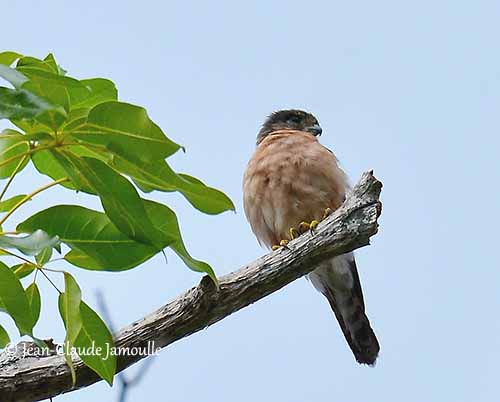
CALLS AND SONGS:
The Seychelles Kestrel is mainly vocal during the breeding season. While flying, it gives loud and fast “ki-ki-ki…” during long periods, giving the bird its local name “Katiti”.
BEHAVIOUR IN THE WILD:
The Seychelles Kestrel feeds primarily on lizards such as skinks (Scincidae) and geckos, but it also takes insects, small rodents (mice) and small birds.
It usually hunts from a perch. The preys are taken from branches, foliage or on the ground. It also hunts on the wing, but unlike numerous Falconidae, this species does not hover, but it may circle over its territory.
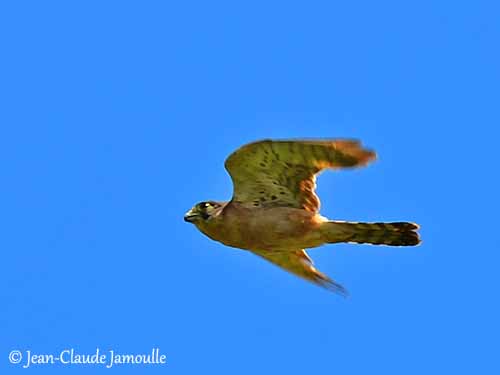
As resident species, the Seychelles Kestrel has long-term pair-bonds, and the pair occupies the territory all year round.
There is no information about the courtship displays, but they probably perform spectacular aerial displays accompanied by short, high-pitched calls, like numerous kestrels are doing. However, the established pairs usually display less vigorously than the newly formed pairs.
The Seychelles Kestrel is resident in its restricted range, with only some dispersion between the islands.
It has short, pointed wings. It is a powerful flier but it does not hover.
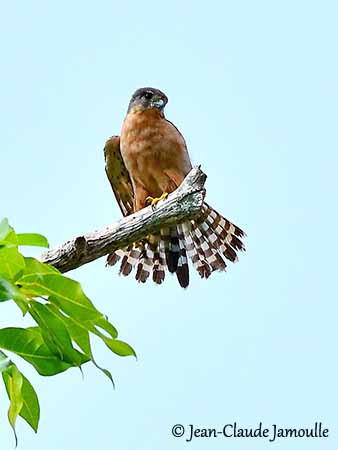
REPRODUCTION OF THIS SPECIES:
The breeding season occurs between August and October, sometimes extending to January.
The Seychelles Kestrel nests in cavities, usually in rocky-cliff face, up to 200 metres above the sea-level. But it may use abandoned nests of Common Myna, placed at base of coconut palm fronds. It may also make a scrape on building ledges or use a hole in tree. The nest is made with sticks.
The female lays 2-3 white eggs with dark markings. The incubation lasts 28-31 days. The young fledge between 35 and 42 days after hatching, but they still depend on parents for 9 to 24 weeks more.
Breeding success is better at higher elevation and mainly on cliffs, due to absence of predators such as Black rats (Rattus rattus).
There is sometimes competition for nesting holes with introduced species such as Barn Owl and Common Myna.
The Green-backed Heron is an important nest predator too.
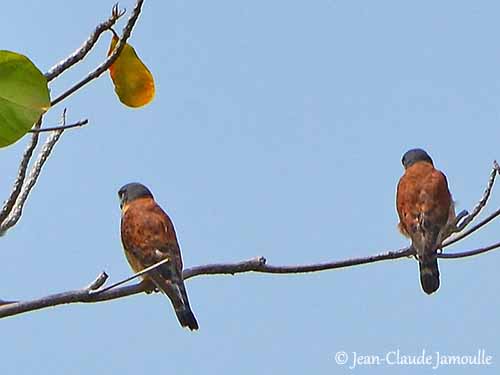
PROTECTION / THREATS / STATUS:
The Seychelles Kestrel has small populations living in restricted range, and recent declines have been reported.
This species is threatened by introduced predators, nest-site competitors and food competitors. Destruction of the forested habitats and human developments affect this raptor too.
The Seychelles Kestrel is currently listed as Vulnerable with a population of about 800 individuals, roughly equivalent to 530 mature birds.
